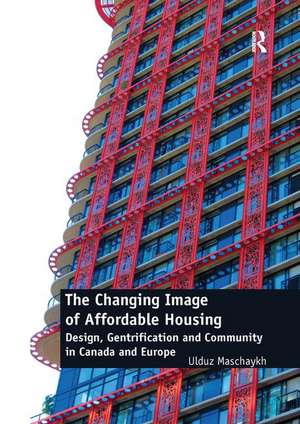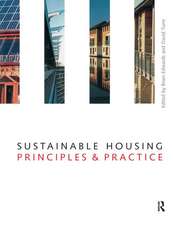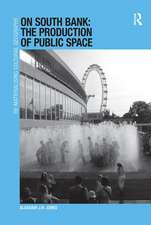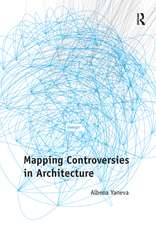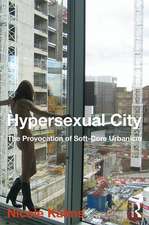The Changing Image of Affordable Housing: Design, Gentrification and Community in Canada and Europe
Autor Ulduz Maschaykhen Limba Engleză Paperback – 12 oct 2017
Preț: 310.05 lei
Preț vechi: 362.97 lei
-15% Nou
Puncte Express: 465
Preț estimativ în valută:
59.34€ • 61.72$ • 48.98£
59.34€ • 61.72$ • 48.98£
Carte tipărită la comandă
Livrare economică 14-28 aprilie
Preluare comenzi: 021 569.72.76
Specificații
ISBN-13: 9781138567771
ISBN-10: 1138567779
Pagini: 178
Dimensiuni: 174 x 246 x 19 mm
Greutate: 0.34 kg
Ediția:1
Editura: Taylor & Francis
Colecția Routledge
Locul publicării:Oxford, United Kingdom
ISBN-10: 1138567779
Pagini: 178
Dimensiuni: 174 x 246 x 19 mm
Greutate: 0.34 kg
Ediția:1
Editura: Taylor & Francis
Colecția Routledge
Locul publicării:Oxford, United Kingdom
Notă biografică
Ulduz Maschaykh is an art/urban historian with an interest in architecture, design and the impact of cities on people’s lives. Through her international studies in Bonn (Germany), Vancouver (Canada) and Auckland (New Zealand) she has gained a diverse and intercultural understanding of cultures and cities. In September 2013Dr Maschaykh completed her PhD in Art and Architecture History at the University of Bonn in collaboration with the University of British Columbia, Vancouver. She is currently a postdoctoral research fellow at the research network 'Collaboratory for Research on Urban Neighbourhoods, Community Health and Housing' (CRUNCH) at McMaster University. Her research focuses on the architectural semiotics of cities in regard to affordability, scarcity and urban branding strategies reflected in the architectural language.
Recenzii
’This unique study of inclusive affordable housing strategies highlights the important role architecture plays in giving people from a broad range of backgrounds a sense of identity and belonging in housing those on the margins. Contemporary examples from Germany, Austria, and western Canada identify issues such as heritage preservation, design, class, and gentrification, making this book a clear argument for mixed use, mixed income housing communities. It is a useful resource for architects, planners, non-profit housing groups, municipalities, policy makers, and others involved in affordable housing.’ Emma Cubitt, Associate at Invizij Architects in Hamilton, Ontario, Canada
Cuprins
Introduction; Chapter 1 From Eighteenth-Century Landed Gentry to Twenty-First-Century Gentrification; Part I Early Beginnings of Affordable Housing; Chapter 2 Affordable Housing in Austria and Germany; Chapter 3 Changing Images of Affordable Architecture in Twenty-First-Century Germany; Part II Canada’s Approach to Affordable Architecture; Chapter 4 Victoria: Preserving the Past and Reviving Prosperity; Chapter 5 Vancouver; Chapter 6 The Poor, the Lost, the Forgotten; Chapter 101 Conclusion;
Descriere
This book examines the livability and affordability of twenty-first-century residential architecture. Focusing on the architects’ and communities’ commitment to these housing programmes, it stresses the importance of the context of the neighbourhoods in which they are placed, either in the process of urban transition or already gentrified.
